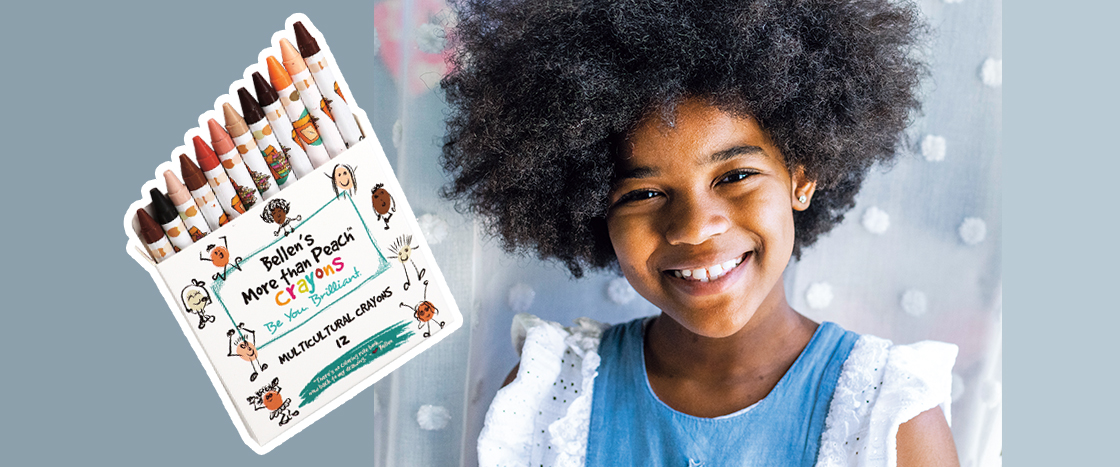When Bellen Woodard was in third grade, a classmate asked her to pass the “skin-colored crayon.” Bellen handed a peach crayon to her friend. This was the crayon her classmates had used to color skin. But something bothered her. Bellen was the only Black girl in her grade. The peach crayon matched the skin color of most of her classmates, but it didn’t match hers.
“It made me kind of feel not as important,” says Bellen, who’s now in fifth grade. “Like there’s only one skin color.”
Bellen Woodard was in third grade. A classmate asked her to pass the “skin-colored crayon.” Bellen handed a peach crayon to her friend. The peach crayon was the crayon her classmates had used to color skin. But something bothered Bellen. She was the only Black girl in her grade. The peach crayon matched the skin color of most of her classmates. But it didn’t match hers.
“It made me kind of feel not as important,” says Bellen. She’s now in fifth grade. “Like there’s only one skin color.”

